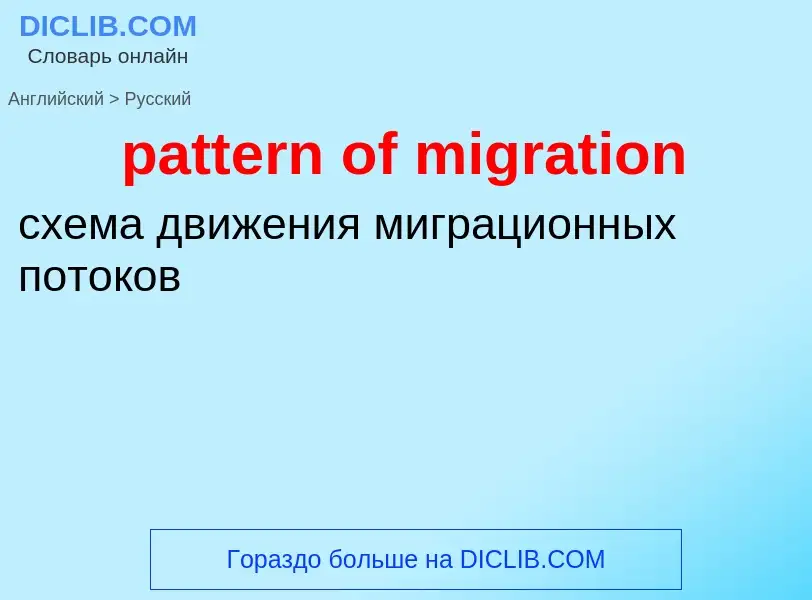Translation and analysis of words by ChatGPT artificial intelligence
On this page you can get a detailed analysis of a word or phrase, produced by the best artificial intelligence technology to date:
- how the word is used
- frequency of use
- it is used more often in oral or written speech
- word translation options
- usage examples (several phrases with translation)
- etymology
pattern of migration - translation to russian
[i'rʌpʃ(ə)n]
общая лексика
вторжение
набег
нашествие (напр. саранчи)
существительное
общая лексика
вторжение
разлитие
разлив
взрыв
демографический взрыв
внезапное вторжение, набег, нашествие
Definition
.
Wikipedia

Animal migration is the relatively long-distance movement of individual animals, usually on a seasonal basis. It is the most common form of migration in ecology. It is found in all major animal groups, including birds, mammals, fish, reptiles, amphibians, insects, and crustaceans. The cause of migration may be local climate, local availability of food, the season of the year or for mating.
To be counted as a true migration, and not just a local dispersal or irruption, the movement of the animals should be an annual or seasonal occurrence, or a major habitat change as part of their life. An annual event could include Northern Hemisphere birds migrating south for the winter, or wildebeest migrating annually for seasonal grazing. A major habitat change could include young Atlantic salmon or sea lamprey leaving the river of their birth when they have reached a few inches in size. Some traditional forms of human migration fit this pattern.
Migrations can be studied using traditional identification tags such as bird rings, or tracked directly with electronic tracking devices. Before animal migration was understood, folklore explanations were formulated for the appearance and disappearance of some species, such as that barnacle geese grew from goose barnacles.


.jpg?width=200)
![High-mountain [[shepherd]]s in [[Lesotho]] practice [[transhumance]] with their flocks. High-mountain [[shepherd]]s in [[Lesotho]] practice [[transhumance]] with their flocks.](https://commons.wikimedia.org/wiki/Special:FilePath/High mountain Shepherds.jpg?width=200)
![spawn]] spawn]]](https://commons.wikimedia.org/wiki/Special:FilePath/Jumping Salmon.jpg?width=200)
![monarch]], tagged for identification monarch]], tagged for identification](https://commons.wikimedia.org/wiki/Special:FilePath/Monarch Butterfly Danaus plexippus Tagged Closeup 3008px.jpg?width=200)
![An aggregation of migratory ''[[Pantala flavescens]]'' dragonflies, known as globe skimmers, in [[Coorg]], India An aggregation of migratory ''[[Pantala flavescens]]'' dragonflies, known as globe skimmers, in [[Coorg]], India](https://commons.wikimedia.org/wiki/Special:FilePath/PantalaFlavescensTalakaveri.jpg?width=200)
